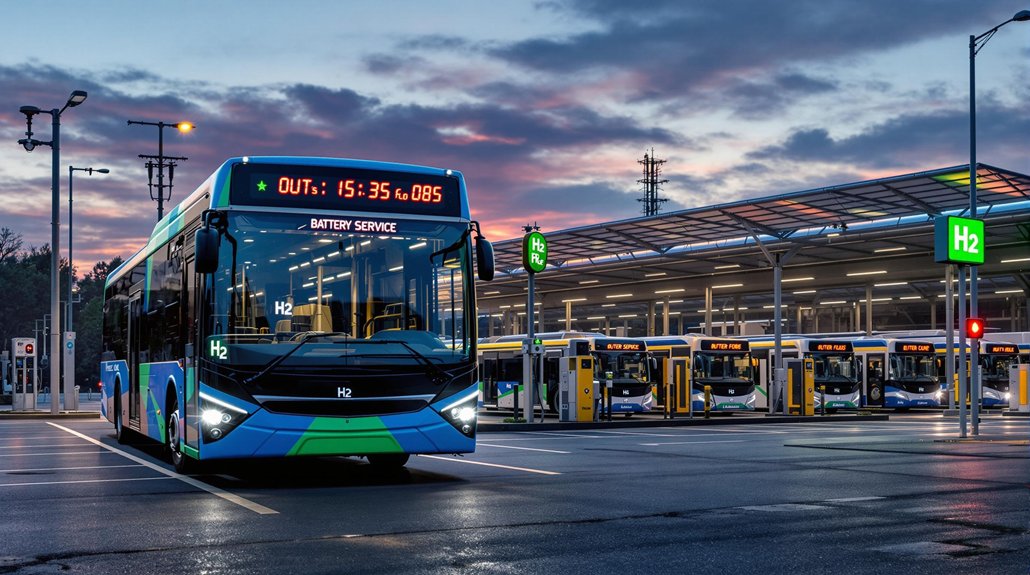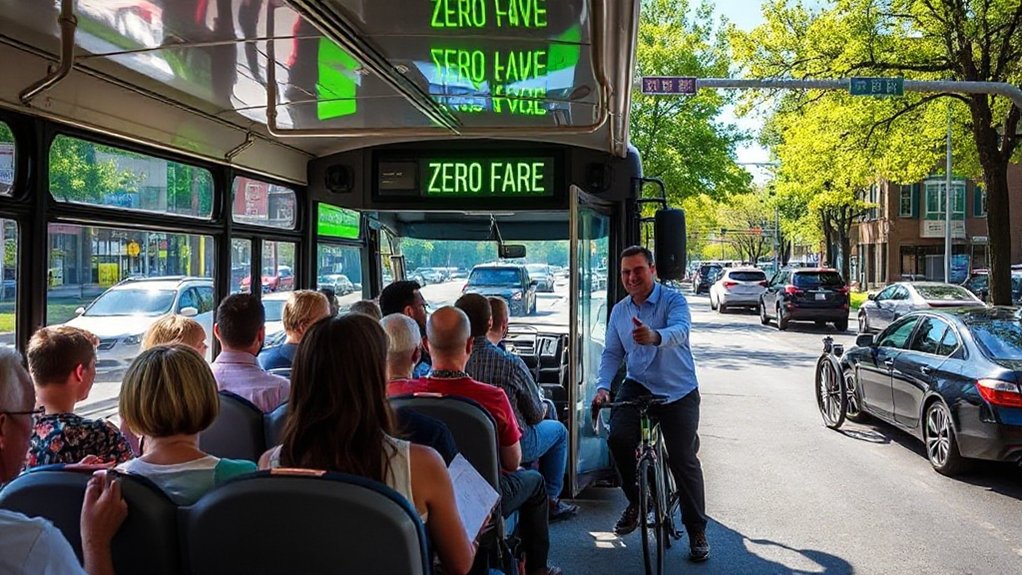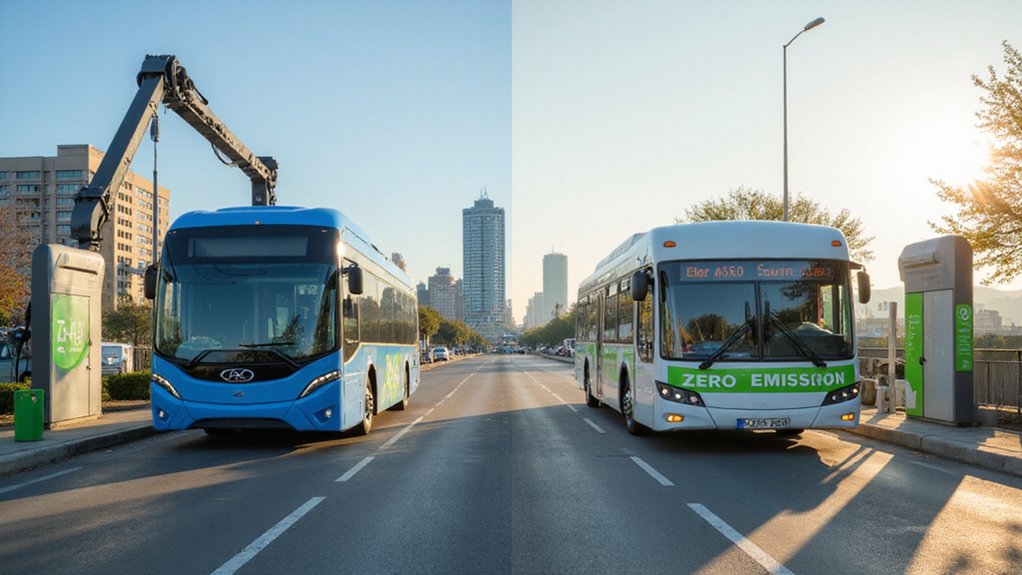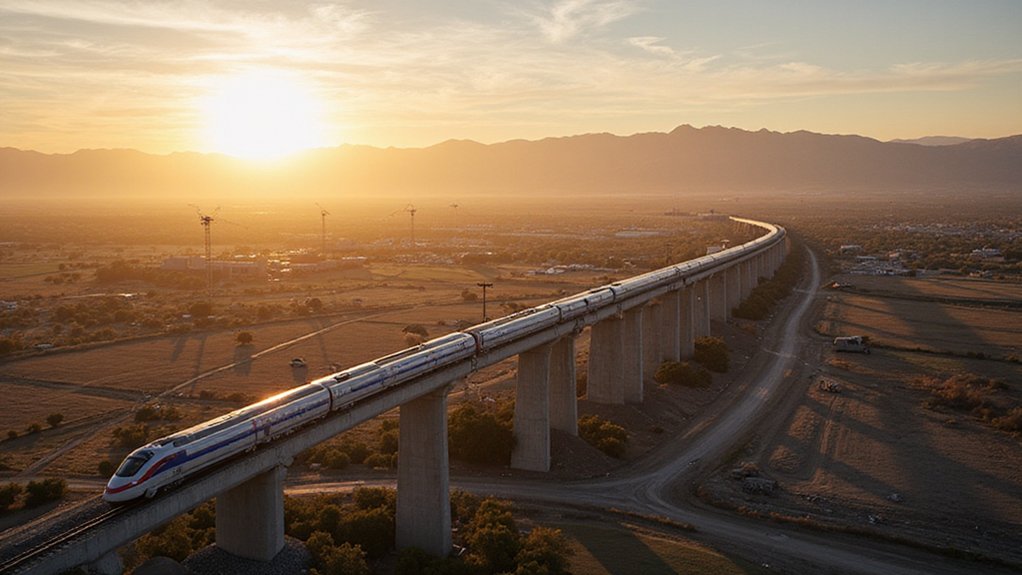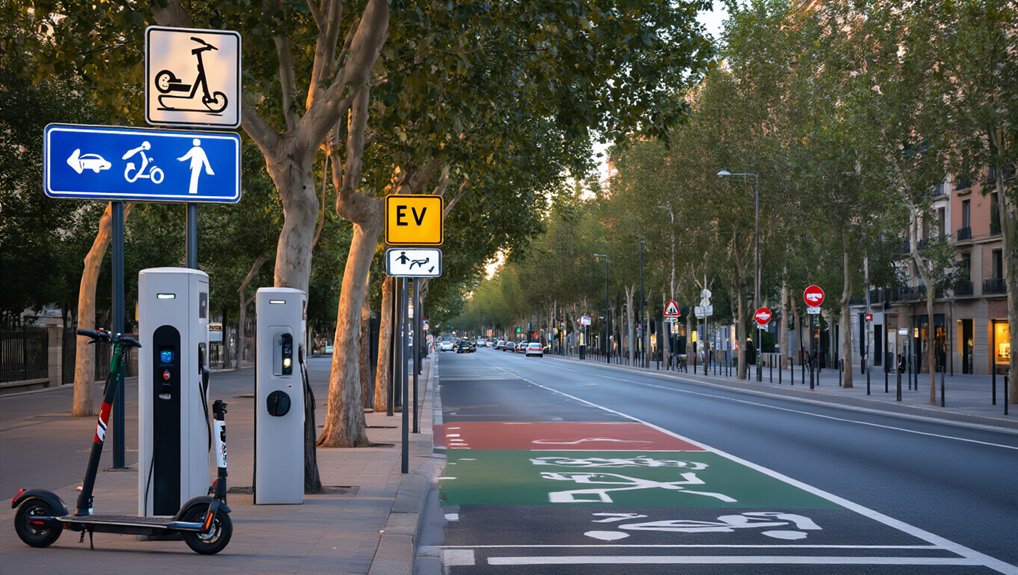Europe’s transit systems face a critical choice in the zero-emission transformation. Hydrogen buses, once hailed as the future of clean public transport, now struggle to compete with battery-electric alternatives. High costs, fuel supply issues, and limited infrastructure have restricted hydrogen buses to less than 2% of projected European fleets by 2030. Meanwhile, battery-powered buses offer lower operating expenses and simpler implementation. The outcome of this technological competition could reshape urban mobility for decades.
While European cities have been enthusiastic to test hydrogen-powered buses as a clean transportation option, these experiments have faced significant challenges. Cities like Brussels struggled with fuel supply issues, often relying on hydrogen trucked in from distant locations due to the absence of local production facilities. This created reliability problems and increased operational costs for transit agencies.
The financial picture hasn’t been promising either. Despite significant EU funding through programs like JIVE 1, JIVE 2, and CHIC, hydrogen buses remain expensive to operate. These projects deployed hundreds of buses across Europe but revealed that both infrastructure and fuel costs exceed those of diesel and battery-electric alternatives. The Fuel Cell & Hydrogen Joint Undertaking provided essential financial support, highlighting the need for public-private partnerships to make these projects viable.
Environmentally, hydrogen buses showed potential with zero tailpipe emissions and impressive ranges of up to 500 kilometers. However, the environmental benefits were often undermined by the carbon footprint of the hydrogen itself. Many projects couldn’t secure green hydrogen, which reduced the overall sustainability of these transit solutions. The challenge mirrors larger issues in energy storage capacity that renewable energy faces when scaling to meet transportation demands. Aberdeen’s hydrogen bus fleet has been completely inactive since July 2024 due to inconsistent hydrogen supply, illustrating the practical challenges these programs face. The Clean Hydrogen Partnership continues to co-finance projects designed to overcome these hydrogen refuelling infrastructure limitations across Europe.
Market adoption has been slow, with hydrogen buses representing less than 2% of projected European bus fleets by 2030. The lack of fueling stations and high setup costs have limited widespread deployment. Meanwhile, battery-electric buses have gained favor due to their lower lifecycle costs and simpler infrastructure requirements.
On the positive side, hydrogen buses demonstrated strong technical performance. They achieved operational ranges exceeding those of many battery-electric buses and proved reliable in diverse climate conditions. The CHIC and JIVE projects showed these vehicles could integrate well into city transit operations.
Despite technological feasibility, economic barriers continue to restrict large-scale hydrogen bus deployment across Europe. Battery-electric technology has moved ahead in the zero-emission transit race, receiving greater investment due to its market readiness and cost advantages compared to hydrogen alternatives.
